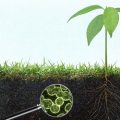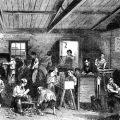PTE考生目前最大的问题之一就是练习题缺乏。除了有限的基本官方书(PLUS,Testbuilder, OG)之外,就没有题了。很多英语基础不是很扎实的同学很难找到练习材料。墨尔本文波雅思PTE培训学校专门为墨尔本,悉尼PTE考生准备了适合PTE听力阅读练习的科学60秒。各位PTE同学可以练习PTE听力中的summarise spoken text和PTE口语中的retell lecture,练习记笔记技巧和复述。废话少说,下面开始:
60秒科学:Help ID Moon Craters from Your Couch
听力内容:
60秒科学节目(SSS)是科学美国人网站的一套广播栏目,英文名称:Scientific American – 60 Second Science,节目内容以科学报道为主,节目仅一分钟的时间,主要对当今的科学技术新发展作以简明、通俗的介绍,对于科学的发展如何影响人们的生活环境、健康状况及科学技术,提供了大量简明易懂的阐释。
Tired of playing Angry Birds while you wait for the bus? Why not explore the surface of the moon? Seriously. During the past two years, citizen scientists have helped locate more than 500 million lunar craters by using an app called MoonMappers. Even more impressive: the public’s picks matched those submitted by professional astronomers, findings that appear in the journal Icarus. [Stuart J. Robbins et al, The variability of crater identification among expert and community crater analysts]
Laypersons lend a hand in everything from cataloging bird migration to predicting how proteins fold. But does this amateur assistance actually help? To find out, researchers asked eight experts to identify craters in data collected by a NASA orbiter. And they compared the experts’ selections with those generated by folks using the MoonMappers app.
The results: ordinary people can spot craters like the pros. That’s good news for astronomers, who are counting on volunteers to help classify the condition of those craters, from °∞it’s perfect°± for those pockmarks with pristine edges to °∞that’s a crater?°± for the ones that look like rounded dents.
Examining these visual markers of past collisions will teach us more about the history of our solar system. And could help you kick that Candy Crush habit.
-Karen Hopkin





